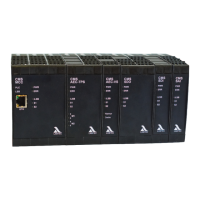23
3 System Description
For each channel up to 20 points can be programmed across the firing range. These are rep-
resented by values (digits) 0 ... 999 to indicate their relative positions.
Inputs/outputs
The CMS is equipped with both digital and analogue inputs and outputs, see chapter 3.2 Dig-
ital Input/Output Functions. and chapter 3.3 Analogue Inputs/Outputs.
Integrated burner control unit
A burner control unit with a sequential program is integrated into the CMS. The following out-
puts are possible:
• Activation of the gas valves
• Activation of the oil valves
• Activation of the pilot valve and the spark igniter
• Activation of the combustion air fan
• Signal outputs for oil and gas operation
• Oil pre-heating
• Fault status signal
• Other logical signals possible
External digital signals are hard-wired to the control unit via volt-free digital signals (either sin-
gle digital contacts or chained contacts). The following signals can be predefined, for example:
• System safety interlock chain
• 4 Discrete fuel safety interlock chains
• Burner on
• Fuel selection
• Flame signal (main and pilot flame monitor), up to 2 main flame monitors
• Fuel pressure monitor
• Air pressure monitor
• Control release (LFH - low)
• Recirculation enable
• Fault release
• Pre-purge and ignition release
• Pre-purge suppression
For Details refer to chapter 3.2.1 Digital Inputs.
Electronic ratio control system
The integrated electronic ratio control unit ensures that the control element outputs are cor-
rected and precisely positioned at their pre-programmed curve set positions at each point in
the firing range.
Each of the control elements has a feedback position mechanism that enables the controller
to verify its actual position in relation to the programmed position; the feedback is either po-
tentiometer or 4-20mA.
If the verified position deviates from the programmed position for too long a period or by too
may 'digits' a safety shut-down is initiated together with an alarm indicating the nature of the
fault
• The controller stops actuators in order to prevent these actuators from leaving the control
system.
• It ensures that the actuator activity stays within the control system.

